Did you know that very few ducks actually “quack”?
It’s true, they don’t.
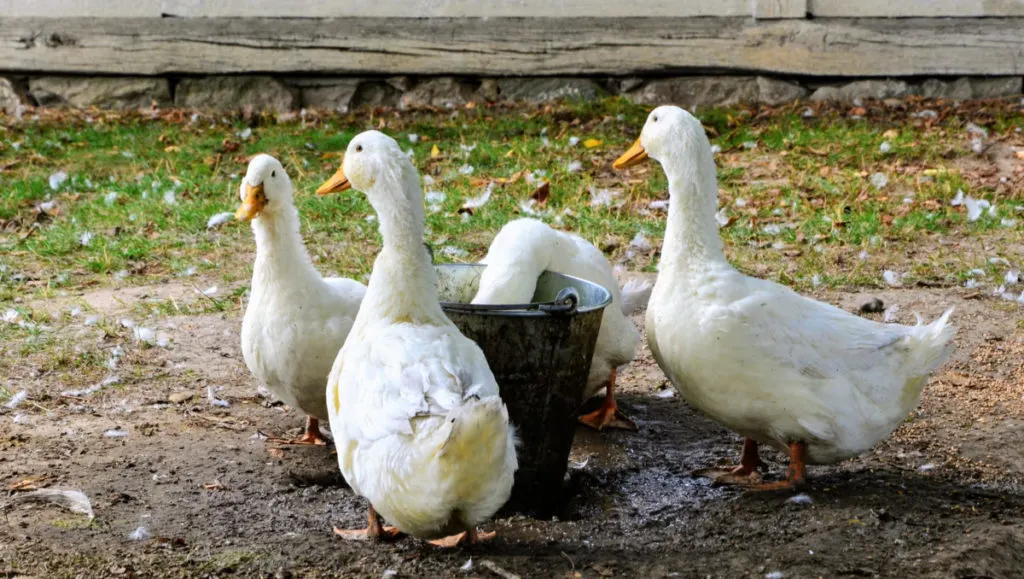
Are you aware that male ducks are called drakes? That females are called hens or ducks? And that a group of ducks in the water is called a raft, a paddling or a team?
Now that I’ve got you thinking more deeply about ducks, let’s dive into the motivation for keeping a brood on dry land.
The reasons to raise ducks are many and varied. Tracey has 17 Reasons to Raise Ducks Instead of Chickens if you need a little persuading.
As you read through the article and find yourself taking a liking to more than one breed of duck, don’t be alarmed. Many duck breeders dabble in having more than one – after all, variety is the spice of life.
5 main reasons to raise ducks
Whether you consider yourself a backyard gardener, homesteader, or hobby farmer with a sufficient amount of land, you’ll eventually find yourself making a quacking decision: what duck breed to choose?
Before choosing the breed, however, it is best to know what your expectations of the flock are.
Are you after a few gals to keep you company in the yard, or to integrate with your flock of chickens?
Is it food you are after, to supplement the seasonal bounty from your garden?
Or maybe, you are entertaining the notion of making money from your homestead. To help make ends meet, or to go even further than that: using your ducks as artistic inspiration to make products to sell online. There is absolutely nothing wrong with that. Duck and chicken aficionados all over the world love to decorate with images of their feathered friends.
Yet, most people raise ducks for very pragmatic reasons:
- meat
- eggs
- pest control
- feathers and down
- herd dog training
Naturally, there are multi-purpose duck breeds which cross the line into both meat and egg-laying. They will be noted accordingly.
Again, choose a duck breed based on your end goals and expectations – not just on the initial cuteness of the ducklings.
Before deciding on a duck breed for your own yard, consider reading this article first, to get a glimpse of what you may encounter: 11 Things You Need To Know About Raising Backyard Ducks
Choosing ducks for meat production
No homestead is entirely complete without animals or birds.
Of course, you can always have a garden and be happy with your vegetable crop, gardening is one of the greatest outdoor activities I can think of. Yet if you are thinking of a self-reliant (or even self-sufficient) diet, then a quality source of protein may be necessary to give you the extra boost of energy you need to get all your chores done.
Trust me, there is hardly ever a lazy day on a farm.
And when you get ducks, you’ll be in for a certain amount of work: giving clean water – multiple times a day, feeding, cleaning, filling more water and so on.
If you have the space for ducks and don’t mind the mess, you are going to love having them. However, if you have any doubts, my best advice for you is to hold off on getting ducks until you are absolutely ready.
So, if and when you can befriend the idea of eating the animals that you lovingly raise, you’ll now find some meat breeds to look after.
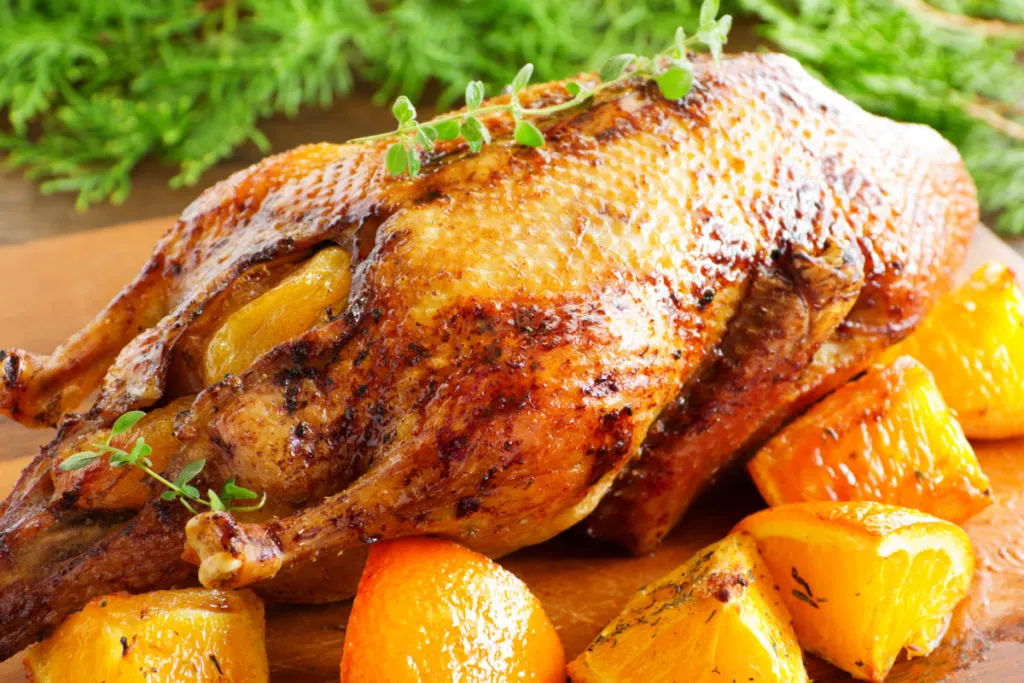
All of them you will be able to butcher at home with some simple skills you can acquire from others both online and in real life.
Pekin
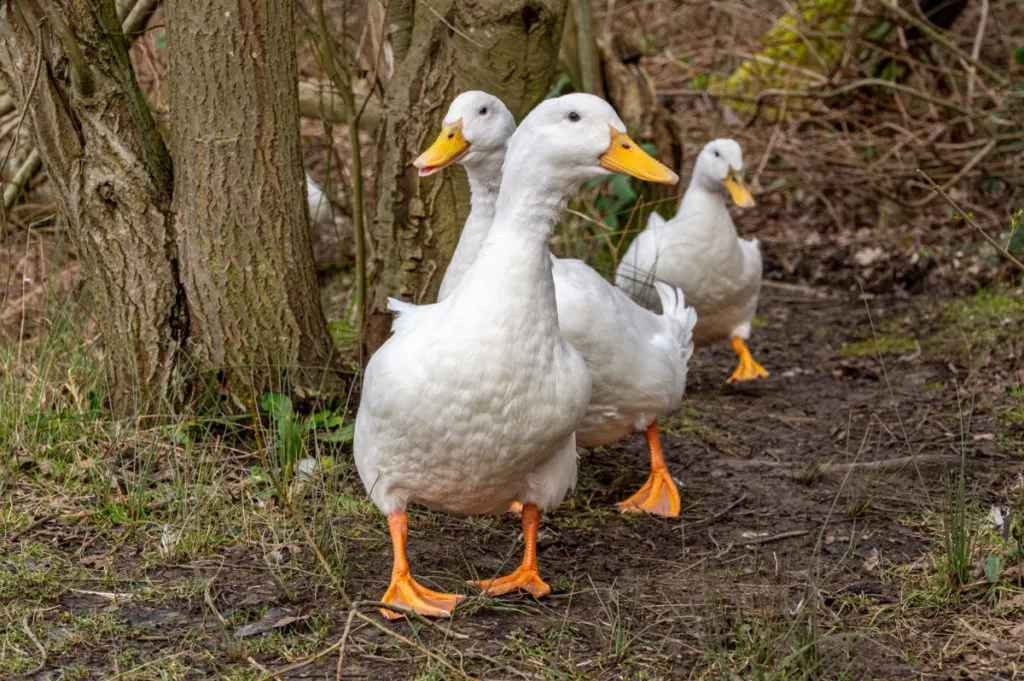
We’ll start with two of the most popular duck breeds for hobby farms: Pekins and Muscovies.
Pekins often top the list as they are a dual-purpose breed, providing both white-shelled eggs and meat.
The carcass is easy to clean compared to other breeds (such as Aylesbury, Blue Swedish and Rouen which have colored feather shafts) and they are ready to butcher at a young age, just 7-8 weeks.
In America, 90% of the duck meat consumed comes from white-feathered Pekins. Their popularity may entice you to raise them, or it may do the opposite, knowing that there are more colorful breeds to choose from.
We mentioned not to raise them because the ducklings are cute, but never said not to enjoy watching them roam about in your backyard.
That being said, Pekins are generally calm, curious and friendly. They make a grand Sunday roast too.
Muscovy
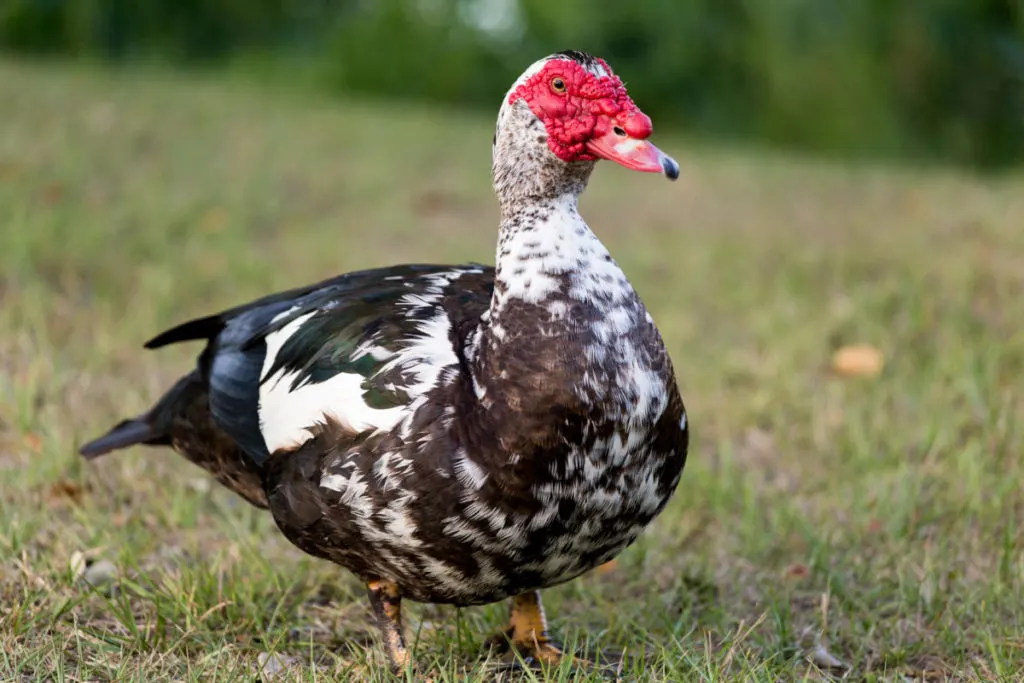
All domesticated duck breeds are said to have originated from the wild Mallard (Anas platyrhynchos) that we all recognize as the colorful ones swimming about on rivers and lakes.
The Muscovy duck, however, is a different species altogether. Not only is it believed to come from South America it has physical differences too.
For example, they nest like most other ducks, but they can also roost like chickens. The meat is leaner than Pekin duck meat, yet their breasts are more plump, akin to a turkey.
One other feature, which may be desirable to a small farmer, is that they do not quack loudly. In fact, the male’s breathy call complements the hen’s quiet coo. So, if you live in close proximity to neighbors, Muscovies may be a great choice for your backyard.
Muscovies also thrive under free-range conditions, making them a suitable option for larger farms as well.
As opposed to Pekin ducks which are ready to butcher in two months, Muscovies are slower growing and should be butchered before they are four months old.
Aylesbury
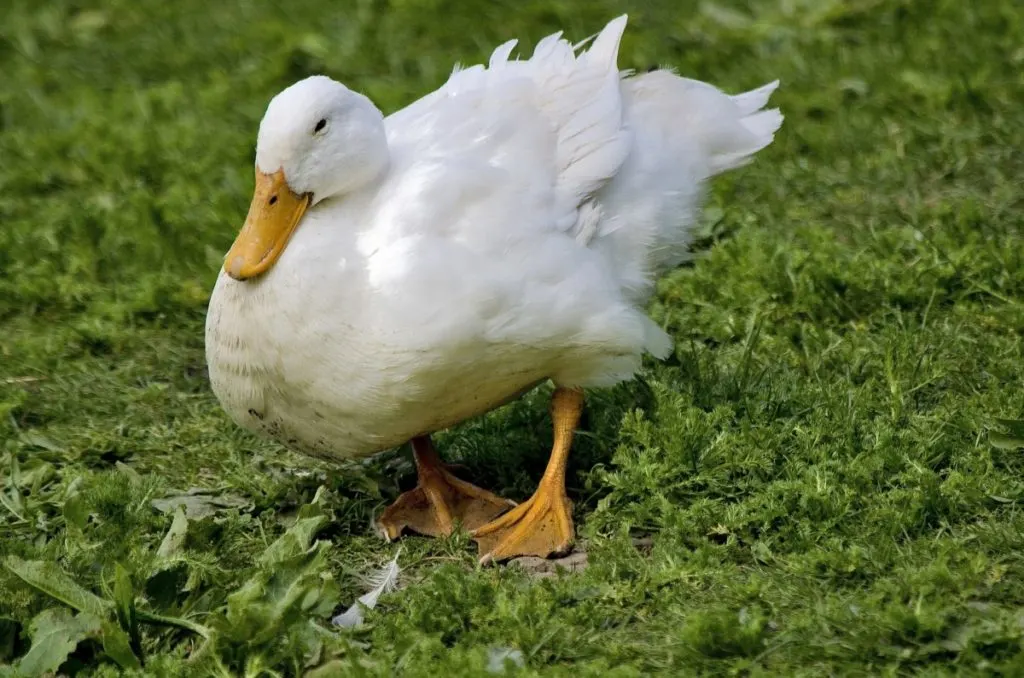
White-skinned ducks are preferred by some, whereas yellow-skinned Pekins are preferred by others. Aylesbury ducks fall into the first category.
Setting aside the preference of skin color, it is useful to know that Aylesbury ducks grow relatively fast. They can easily reach a butchering weight of seven pounds in eight weeks.
They don’t make the best foragers, though they do like to eat! So, be ready to cater to them as you raise awareness of their rare breed critical status.
Buff Orpington
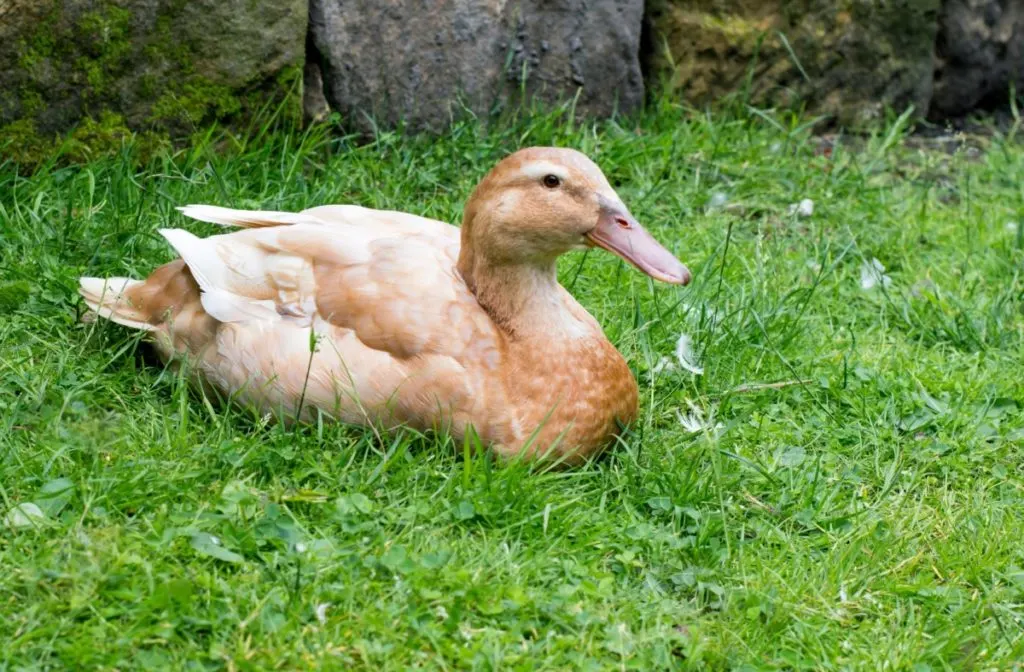
Buffs, as they are commonly called, are a breed that we can only give credit to William Cook for.
Smaller than a Pekin duck, they still gain weight rather quickly. Both males and females can reach their butchering weight in eight to ten weeks, making them desirable meat birds.
Buff Orpingtons were originally kept for their eggs, which they lay at a rate of 3-5 per week. Buffs are a threatened breed as well.
Cayuga
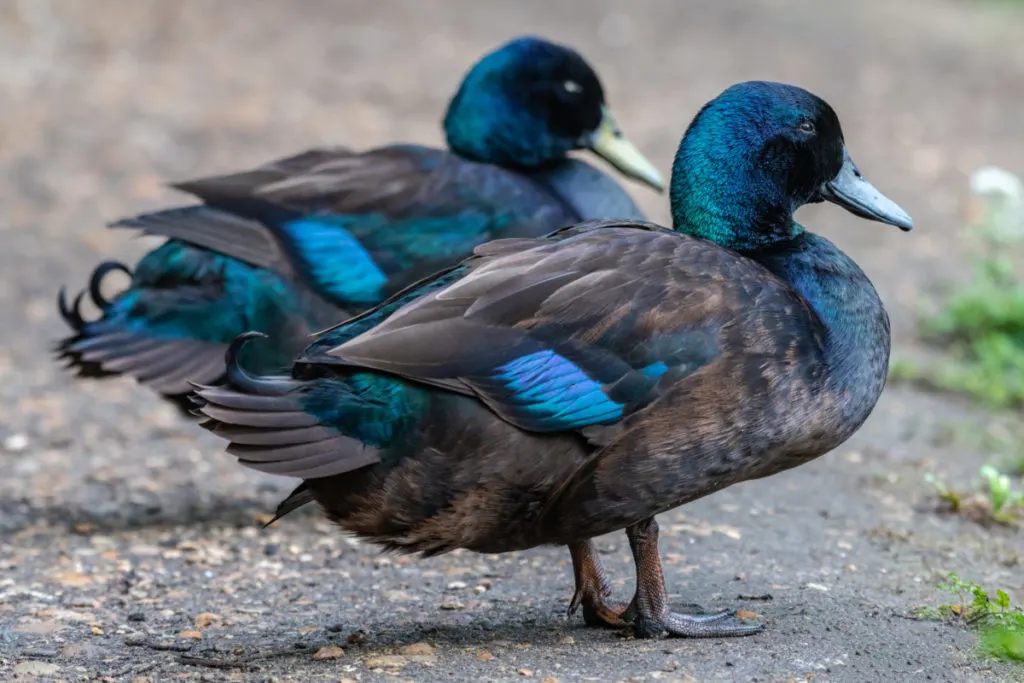
If you are seeking a different flavor of duck meat, you’ll want to give a Cayuga a try. I’ve never tried it myself, but have read that it has an intense and complex beef flavor, which is very succulent. Sounds interesting?
Cayugas are also proficient egg layers, averaging 100-150 eggs per year.
Just as their feathers are black, so is the shell of the egg of darker hues, ranging from jet black to a light gray-green later in the season.
The Cayuga is said to be an extremely hardy duck, tolerant of cold temperatures. At the same time it is quiet and docile.
The Cayuga is also a threatened breed, does it have a place in your yard?
Rouen
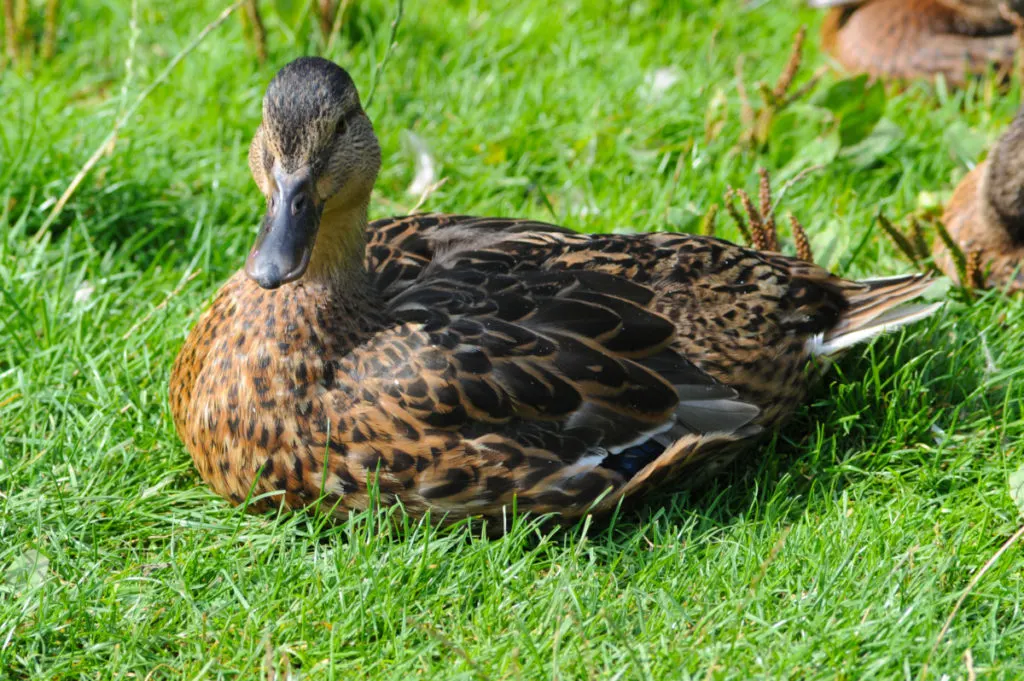
Raised for more than just decoration, Rouens are heavyweight birds that mature slower than other duck breeds. They are ready to butcher only after twelve weeks. While not suited for industrial production, they make for an excellent backyard flock.
Rouens are similar in appearance to Mallard ducks, making them a perfect choice for your backyard pond.
As a dual-purpose bird, they also lay a sufficient amount of eggs, 140- 180 per year.
The Livestock Conservancy lists Rouens as a watched status. There are under 10,000 ducks, with fewer than 5,000 breeding birds in the U.S.
Saxony
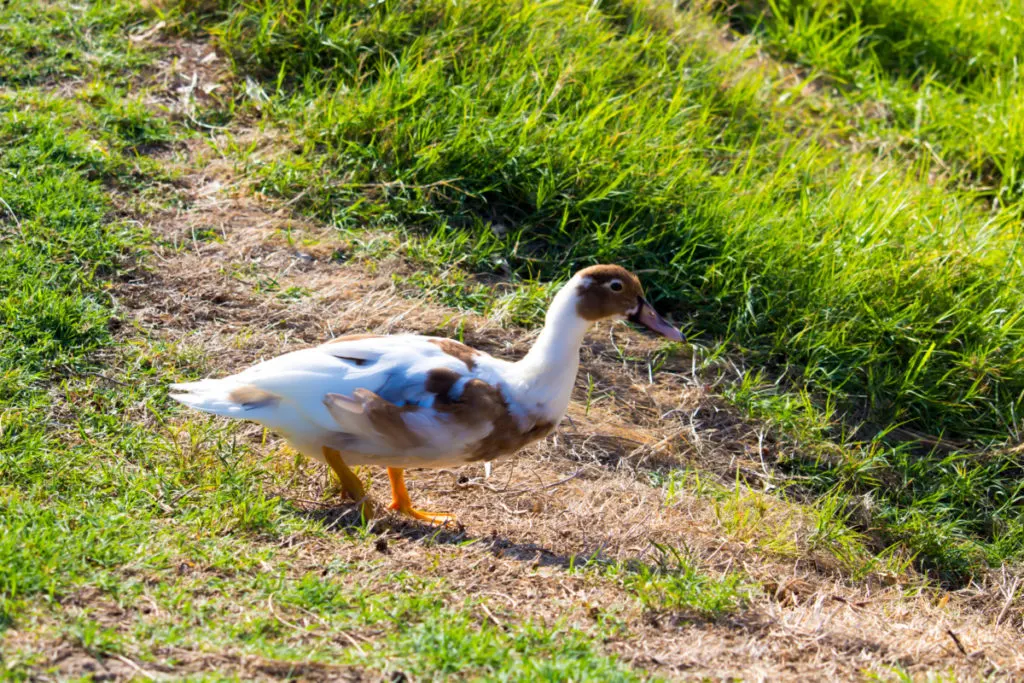
Saxony ducks are also a dual-purpose, heavy breed that produces up to 200 large white eggs per year, as well as tasty meat.
They are excellent foragers, given their large body size. Their lean meat is proof of their high levels of activity in searching out insects.
Saxony ducks are said to be quite easygoing unless they are disturbed, in which case they will become excited and noisy. Again, not quacking, but making a raspy sound to let others know there is something going on.
Welsh Harlequin
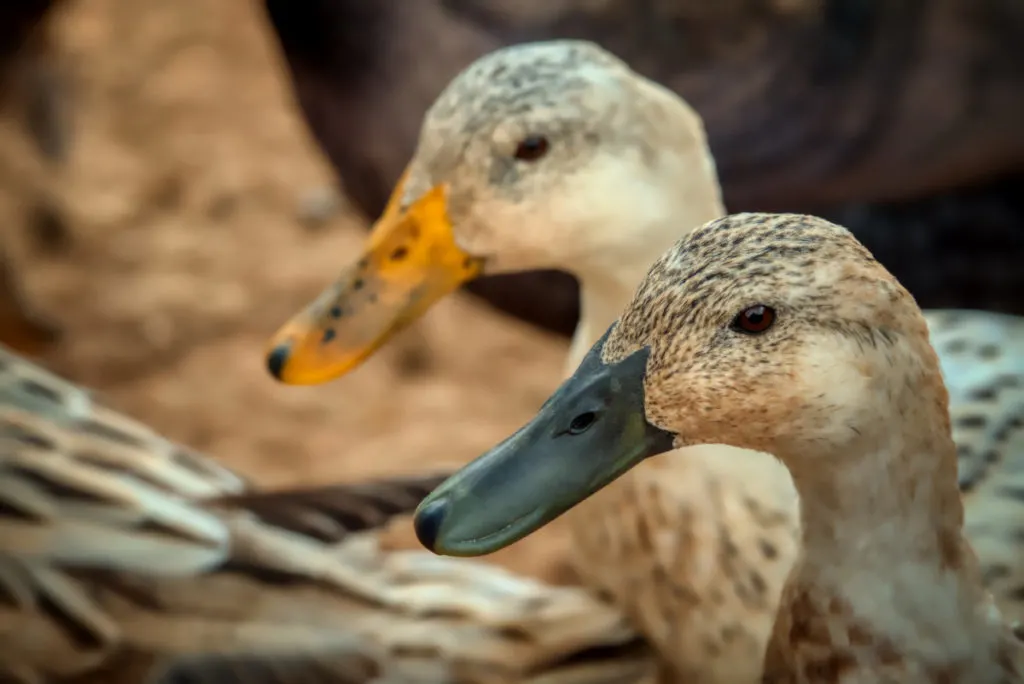
Another great foraging duck is the Welsh Harlequin. If you have land for them to roam, roam they will. While they are on the smaller end of the weight scale, they still produce delectable meat.
At the same time, you might just choose to raise them for egg production. This can vary wildly depending on the conditions in which they are kept, laying anywhere from 200-300 eggs per year.
Choosing ducks for egg production
I don’t want to be the one to spoil your vision of receiving “eggs for free” from your fine-feathered friends. Yet, the act of raising poultry on a small scale is rarely going to save you money. In fact, raising birds can cost a pretty penny.
One way or another, your ducks will make up for all the feed they consume and the water they waste.
You will be rewarded, not monetarily, but in terms of endless hours of entertainment, giving your days a sense of meaning and purpose. Of course, with a certain amount of high-quality eggs.
You have eaten duck eggs before, right?
Raising birds for their eggs
In the past, we raised both guinea fowl and turkeys on our homestead. Both give eggcellent eggs. Tasty and small as they were, hunting for guinea fowl eggs wasn’t the most pleasing chore. We had to be sneaky about gathering them too.
Turkey eggs on the other hand are absolutely delicious. So why don’t most people eat them?
The answer could be lack of knowledge, availability, or simply the fact that they’ve never tried them before. Anything new we introduce into our diets can come with some trepidation, even with eating weeds and flowers.
Duck eggs vs. chicken eggs
Luckily, duck eggs can be found at most larger grocery stores, maybe even obtained from your local CSA. Seek them out and you may even discover a local source.
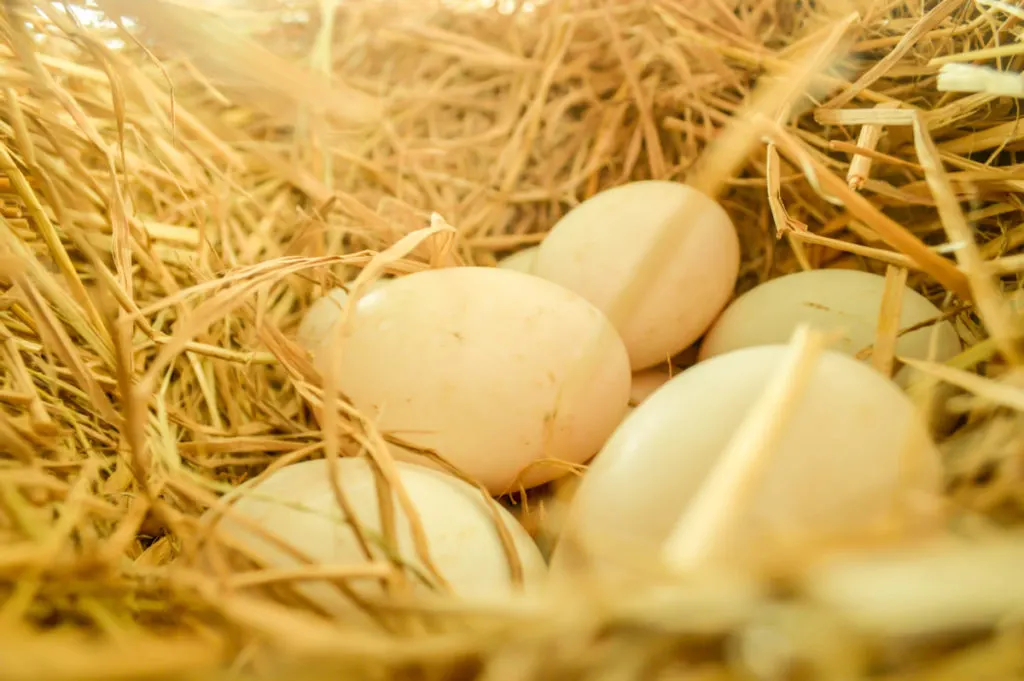
To find out whether or not you’d like to raise ducks for eggs, it is worth eating a few dozen first, just to be sure you like the flavor. There is never any sense in growing or raising what you won’t enjoy to consume yourself.
So, what will it be: duck eggs or chicken eggs?
You already know what chicken eggs taste like, having eaten them your entire life.
Duck eggs have a more yellow yolk, even turning to a vibrant golden orange.
Looking at them from a vitamin and mineral aspect, duck eggs have more magnesium, calcium, iron, thiamin, vitamins A and B12 than chicken eggs do. They are also larger, so you get more dense nutrition in a homegrown package.
From a baking standpoint, duck eggs are far better for baking. They will make your cakes rise higher, give your meringues more stability and in general the taste will be far superior.
Now, let’s introduce you to some duck hens that can make all your baking dreams come true.
Khaki Campbell
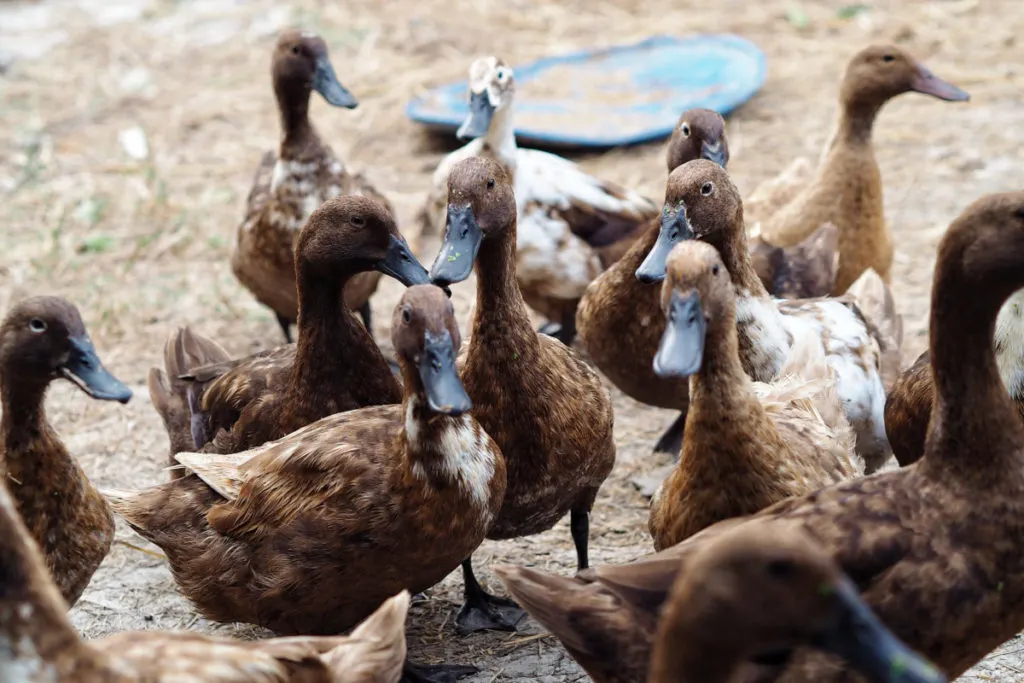
If your goals of raising poultry include a reliable source of eggs, Khaki Campbells may be the perfect fit for your small farm or homestead.
Given the fact that they can lay 5-6 cream-colored eggs per week, as many as 340 eggs per year under the most ideal conditions, they are certainly prolific producers.
You might also find their tan-colored feathers pleasing to the eye, as well as their dark bills.
As long as they have plenty of space to graze, they will be happy.
And happy ducks lay dozens upon dozens of eggs.
Runner ducks
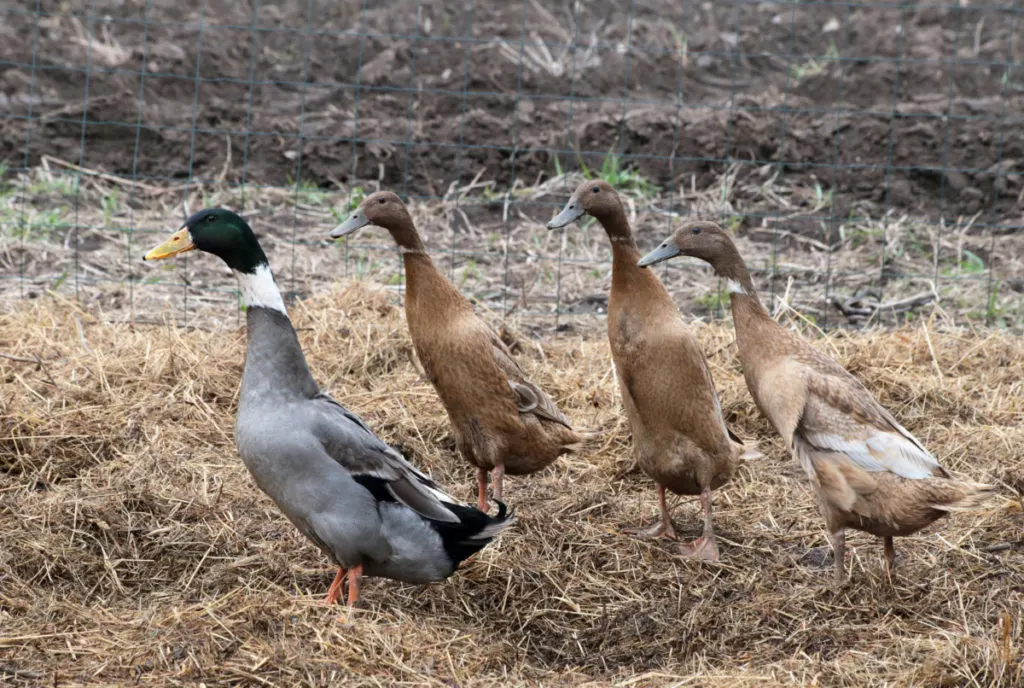
Unlike the squat ducks that everyone is familiar with, runner ducks stand tall and do as their name suggests. They run. Sometimes they even stampede.
Runner ducks can lay 300-350 eggs per year and they do so with consistency. Given that they can live 8-10 years and are in the lightweight class of ducks, they are not suitable for meat production.
However, their small size makes them easy to handle and to herd. Males (drakes) weigh between 3.5-5 pounds, females weigh between 3-4 pounds.
What is also noticeable about the Indian runner ducks, besides their upright stance, is that they come with many color variations: black, light and dark brown, white, blue and brownish-green.
Magpie
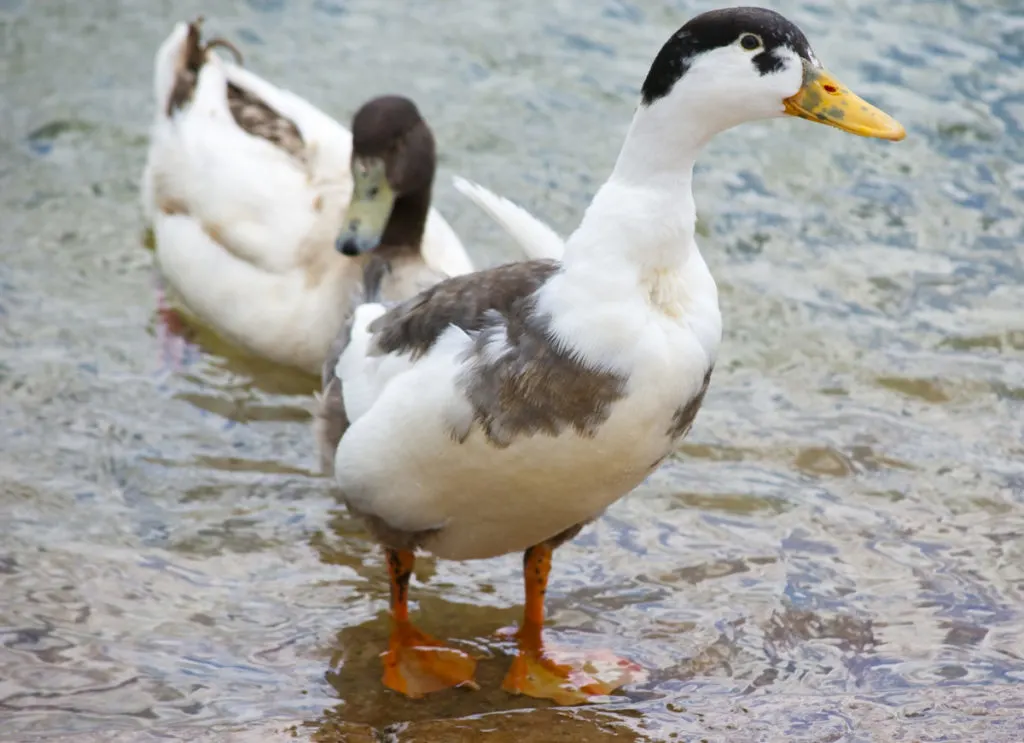
If you are going for quality, not quantity, Magpies might just make it into your backyard flock. A single Magpie hen can lay 220-290 large white eggs per year.
Not only that, they are a dual-purpose breed, which allows you to raise them for meat too. Their carcass is easy to clean and is considered a gourmet bite. Given their smaller size, drakes weighing five pounds, females coming in at 4 pounds, you can host more of them in a smaller space.
Ancona
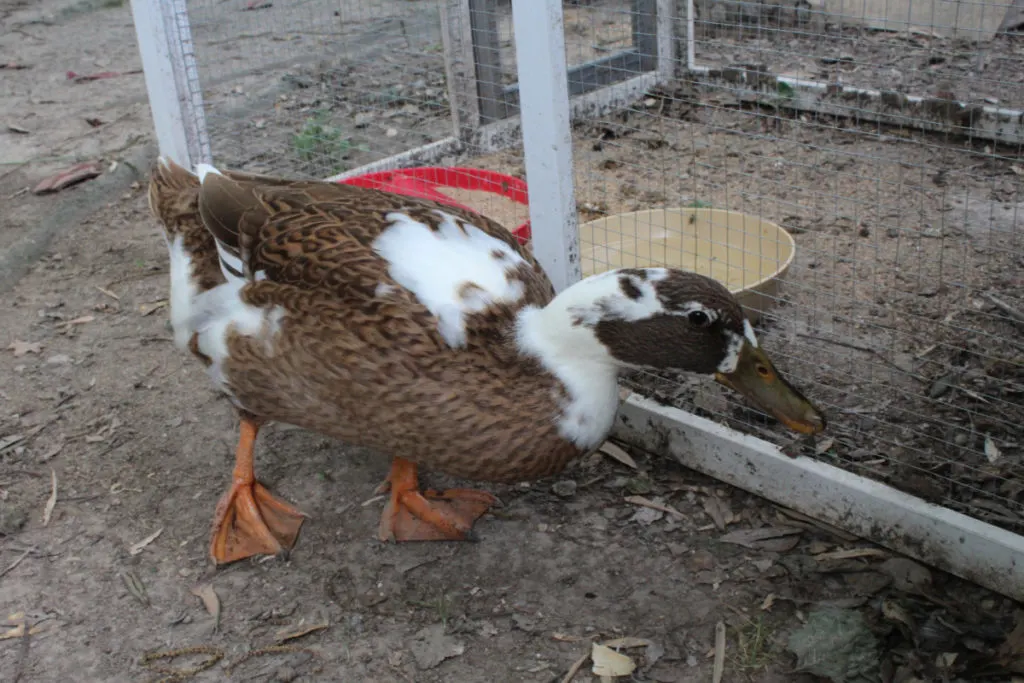
When considering which duck breed(s) to raise on your small farm or homestead, it is always worth looking at heritage breeds. For example, breeds where the numbers are low, or where the breed is in danger of dying out.
Ancona is an American breed that is considered very hardy in its native environments. It is definitely a dual-duck breed to consider, especially if you live in an area with cold winters and humid summers.
Give your Ancona flock plenty of space to roam and they will gladly forage for insects, tadpoles, fish, frogs and banana slugs. Water, as for ducks in general, is a must.
As far as egg laying is considered, Ancona hens lay 210-280 eggs per year. Egg colors range from pure white to cream or blue.
Beware though, Ancona hens are not very broody and don’t always have the tenacity to sit on their own eggs.
Welsh Harlequin
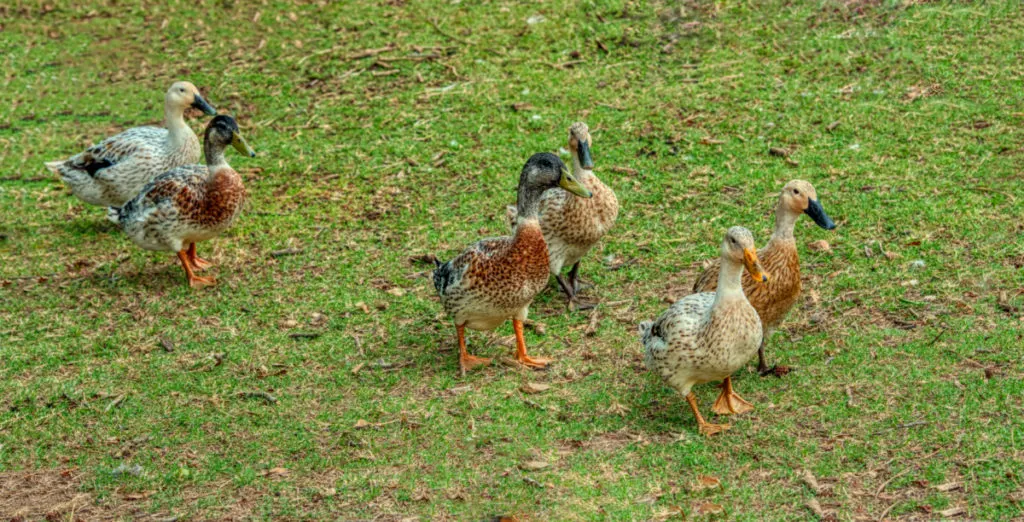
You’ve already met the Welsh Harlequins in the meat-raising category, but you are seeing them here again because they are fantastic egg layers. Welsh Harlequins lay 200-300 white eggs per year. The hens are also known to be broody, which means more ducklings for your quacking enterprise.
If you are seeking a dual-purpose breed, this one might just be on the top of your list.
Once you realize that you can eat your eggshells and use them in the garden, why not try that too. After all, the shell is more than just a pretty package.
Ducks can help out in the garden
Unlike chickens, ducks aren’t prone to scratching the soil with their claws. Rather, they like to stick their round-tipped bills into the wet/muddy earth and search around for whatever it is they like best. This includes pesky slugs and other bugs one cannot fathom eating themselves.
As they are foraging for delectable insects, they also tend to leave your garden plants alone. With the exceptions being strawberries and lettuce.
They may also go after whatever else it is that you give them as treats.
Getting rid of bugs as you keep your plants safe, sounds like a great plan to me.
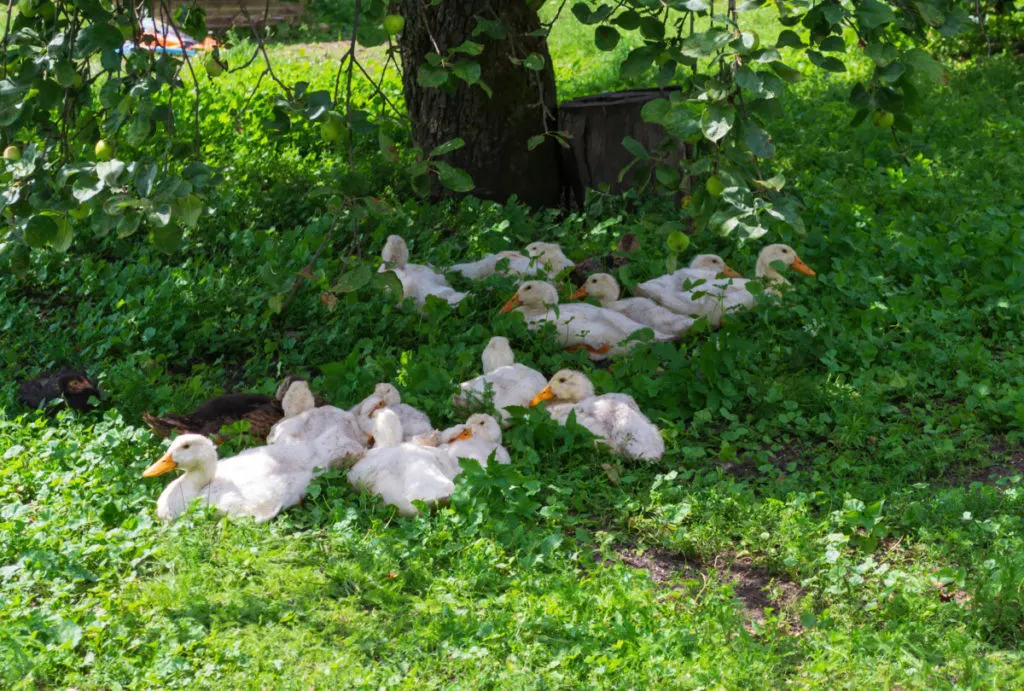
What about keeping ducks for feathers and down?
Get ready for an ethical concern to emerge – does live-plucking cause damage to a bird? Of course it does, yet down is highly sought after around the world for warm winter jackets, winter duvets and pillows. It does make one think about the clothes one wears…
Duck and goose down, including the harvesting of feathers, is an age-old practice that involves the plucking of feathers from the bird. Our ancestors learned long ago that feathers (and furs) were important for winter survival and they passed the process down. If you are going to slaughter your own animals, think about including the collection of useful feathers and down into the meat-processing aspect.
To end on a more upbeat note, how about raising ducks for herding trials?
It might be a one-off topic, but now you are in the know.
What breed of ducks will grace your land; now or in your homestead dreams?
And, of course, raising chickens on your homestead is a great option too.

Get the famous Rural Sprout newsletter delivered to your inbox.
Including Sunday musings from our editor, Tracey, as well as “What’s Up Wednesday” our roundup of what’s in season and new article updates and alerts.

